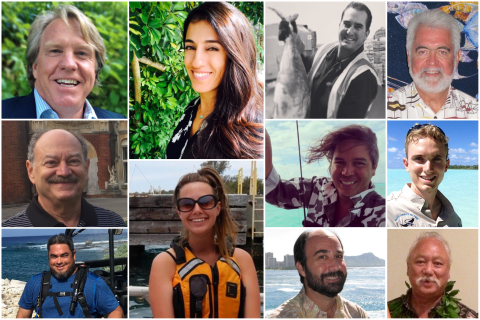What We Do
The Pacific Islands Heritage Marine National Monument is managed in partnership with the NOAA. Together the two agencies have created a Monument Management Plan that provides long-term guidance for management decisions over a 15-year horizon and sets forth desired outcomes, with strategies and activities to reach those outcomes, including the agencies' best estimate of future needs.
Management and Conservation
HABITAT RESTORATION
Sometimes, the best management is to remove problems from the landscape and allow nature to restore itself. The Service does this 'hands-on' management with our partners, even in some of the most remote places on Earth, in the Pacific Remote Islands Monument. Working on the front lines of conservation, some of the recent restoration projects undertaken in the monument include saving coral reefs by removing shipwrecks and looking to the future by eradicating non-native rats: Saving coral reef in the Pacific Ocean: One million pounds of shipwreck at a time ; Looking to the Future at Palmyra Atoll National Wildlife Refuge.
The PRIMNM Community Group
The U.S. Fish and Wildlife Service and NOAA have a continued partnership with the Udall Foundation to enlist selected members of the community to form the Pacific Remote Islands Marine National Monument Community Group. This group provides consultation to our agencies on Monument management, care, and effective stewardship, while also providing a forum to discuss ideas and opportunities regarding the management of the Monument, represented in the Monument Management Plan.
Our Projects and Research
The Monument is home to one of the largest and most pristine collections of deep ocean coral reef, seabird, and shorebird protected areas on the planet, making it an area of great interest to scientists and researchers alike. The deep seamounts that interlace the Monument are estimated to be millions of years old, while the soft corals and biological diversity within the dark ocean depths are rarely seen or studied. Through Special Use Permits, the U.S Fish and Wildlife Service and NOAA work with scientists and researchers interested in respectfully surveying and studying the seamounts or biodiversity within the Monument and the National Wildlife Refuge System refuges and units found within.
A Special Use Permit to conduct activities in the Monument, refuges, and units may be requested by filling out and submitting a Special Use Permit application to the U.S. Fish and Wildlife Service Superintendent of the Pacific Islands Heritage Marine National Monument. In order to have enough time to review, complete consultations, and make a determination on the permit, applications should be submitted at least 5 months in advance of the proposed activities. The permit is not valid until approved and signed by a U.S. Fish and Wildlife Service official.
Special Use Permits
Law Enforcement
U.S. Fish and Wildlife Service law enforcement officers have a wide variety of duties and responsibilities. Officers help visitors understand and obey wildlife protection laws. They work closely with state and local government offices to enforce federal, state and refuge regulations that protect migratory birds and other species from illegal take. Some other duties include patrolling closed areas or wilderness areas, maintaining relationships with neighboring landowners, maintaining refuge boundaries and participating in public events related to refuge issues. U.S. Fish and Wildlife Service works closely with the U.S. Coast Guard and NOAA in regards to illegal trespassing or fishing violations within the monument.
Law enforcement issues should be referred to the deputy refuge manager or refuge manager.
You may also report violations to our "TIPS" line 1-844-FWS-TIPS (379-8477).
Laws and Regulations
Presidential Proclamation 8336 created on January 6, 2009, to form the Pacific Remote Islands Marine National Monument and established protections to approximately 86,888 square miles of waters and submerged and emergent lands. On September 25, 2014, the boundaries of the Monument were expanded through Presidential Proclamation 9173. These proclamations delegate management of the Monument to the Secretary of the Interior, in consultation with the Secretary of Commerce, as the applicable legal authorities. The Secretary of the Interior delegated management of the Monument in Secretarial Order 3281-1 to the Director of the U.S. Fish and Wildlife Service to be managed as units of the National Wildlife Refuge System.


